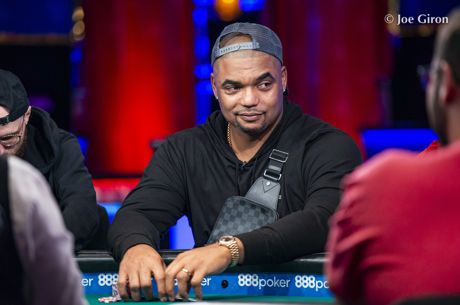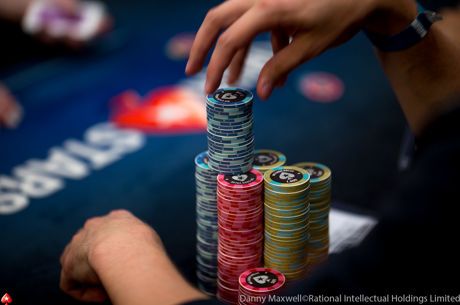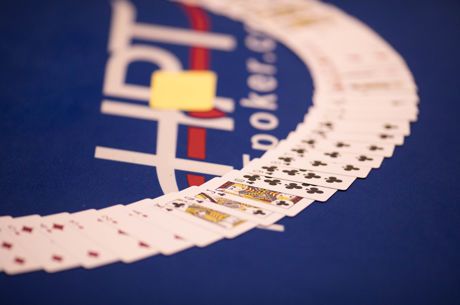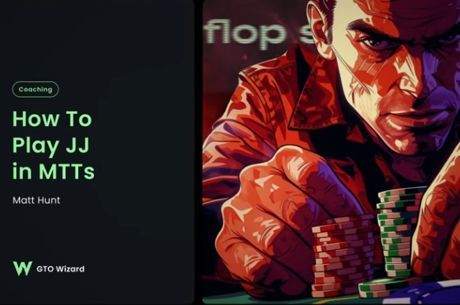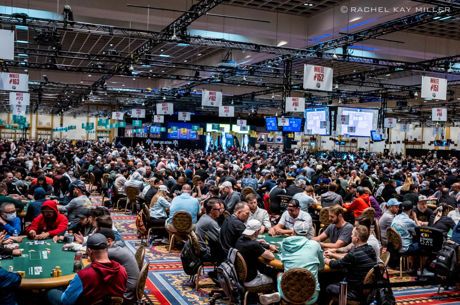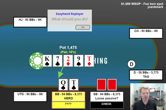Resist Trying to Bluff the Under-Folding Over-Caller
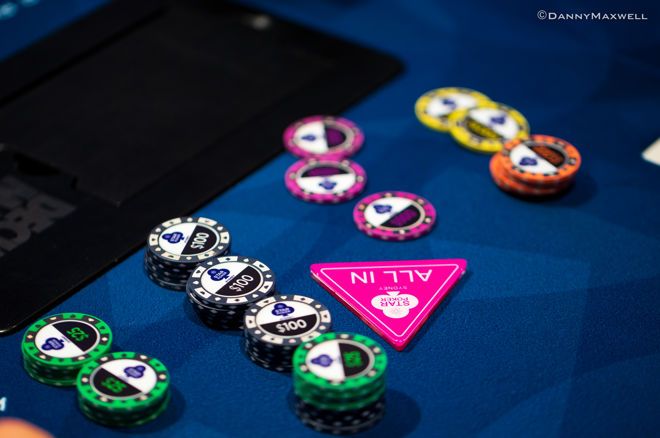
Sometimes we should never bluff, even if we have the perfect hand with which to do so.
For instance, against a player who is under-folding, over-calling, sticky, whatever you want to call it, making river bets with a range that mixes bluffs and value bets will, in many cases, be a mistake. Instead our range in these spots should include only value bets, with the primary question being how thinly to value bet.
Sometimes when this happens you will hold a hand that blocks so much it seems the perfect hand to bluff. But if you should never bluff in that spot, the blockers in your hand are not relevant. If the opponent is calling so much that you should be only value betting, the two cards in your hand will rarely make a difference.
It's a simple lesson with which most experienced players are probably already familiar. Even so, sometimes it's hard to apply it when the temptation to bluff is too great.
Here's an example to illustrate the point, an actual hand played online at the 100NL six-max. tables.
The Reg vs. the Rec
Play began with a min-raise to $2 from UTG+1 (or the hijack in this six-handed game). Next to act, an experienced and aggressive regular three-bet to $7.50 from the cutoff. A recreational player lurking in the big blind with $225 behind cold-called the reraise, and the initial raiser called as well. Three to the flop, then, with our experienced regular in position and covering the recreational player in the big blind.
The flop came 7?5?7?. It checked to the cutoff who bet just $6 (less than 30 percent pot). The rec player in the big blind check-raised the minimum to $12, the initial preflop raiser folded, and the cutoff called.
The turn then brought the 6?, putting three to a straight on the board.
Certainly before the flop it would seem like the cutoff should have a wider variety of hands than the big blind. He was aggressive, after all, and therefore could have preflop bluffs like 9-8, 7-6, and even 5-4. Meanwhile remember the big blind just cold-called preflop, and therefore, in theory, likely needs something more substantial �� say pocket nines or ace-queen.
But the truth is that this recreational player has an unknown range with all sorts of possible holdings. He could easily hold a seven in his hand. He could have pocket fives. He could have a range before the flop wide enough to include 5-4 and 8-4. We simply don't know �� something that is often going to be the case against recreational players.
Relevant Information
We have been given some salient information, however �� the rec player's minimum-raise on this particular flop.
A min-raise with deep stacks usually means the player wants to get more money into the pot without having the opponent(s) fold. On this board, flopped draws do not exactly fit that bill. Even pocket eights doesn't fit it exactly, but because of how small the flop continuation bet was, it cannot be ruled out. In any case, the small check-raise gives us information to narrow down the big blind's range to made hands.
The turn was the 6? as mentioned, making the board 7?5?7?6?. The big blind continued to exert pressure by leading out with a pot-sized bet �� $45. Now... this is a lot of information, indeed.
The big blind has now put in nearly four times as much money as he did on the flop, before he was aware he might encounter resistance. The board has become more draw-heavy as well, so this bet makes it appear as if he has a value hand that might be vulnerable, that he wants to get in the most amount of money he can, or both.
Our experienced recreational player called the bet, pushing the pot up to about $135 with $161 left in the effective stacks behind.
River Scare
The river was the J?, making the final board 7?5?7?6?J?. The flush got there. The big blind checked and our regular ripped it all in for a slight overbet.
It seems unlikely that the big blind ever had a flush draw, and therefore it doesn't appear he could have made a flush. And if he did make a flush, he was unlikely to check it.
Moreover, if he made a full house on this river card, or already had one before it came, he likely would have continued value betting for some size or another. It seems that after he checks the river he is "capped" �� like the best hand he can have is a straight or three-of-a-kind.
Our experienced regular had even more reason to expect this to be the case, because he had 6?5?. It was almost the perfect hand with which to bluff. It blocks 6-6, 5-5, 7-6, and 7-5. Sure, it doesn't block flushes, but given his hand reading, he isn't too worried about the big blind having flushes.
Well, he got snap-called, anyway �� by K?7?.
Lessons Learned
The truth is that as soon as the big blind check-raises this spot on the flop, the game for the in-position player should be to either draw to a strong hand or to show down a decent one.
He can call the turn, hoping to check back the river with hands like pocket eights through pocket aces. Or he can draw to a straight or a flush in hopes of stacking the kind of hand the big blind ended up showing down for the win.
Running an elaborate bluff �� remember this regular called the turn with a counterfeit two pair against a range that by all indications had him destroyed �� should not even be part of the game plan.
If we want to look to the game theory solution for this spot, 6?5? is almost certainly a river bluff-shove. But no game theory opponent takes the line of cold-calling preflop to min-raise the flop, so we never get there.
We're off in the woods of unbalanced ranges from the start, and need to recognize that on the river before trying a bluff that against this particular opponent is never going to work.

